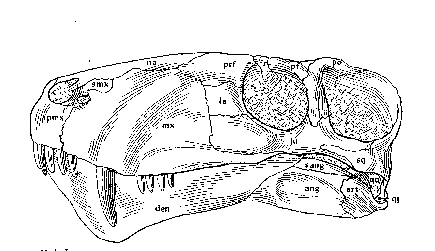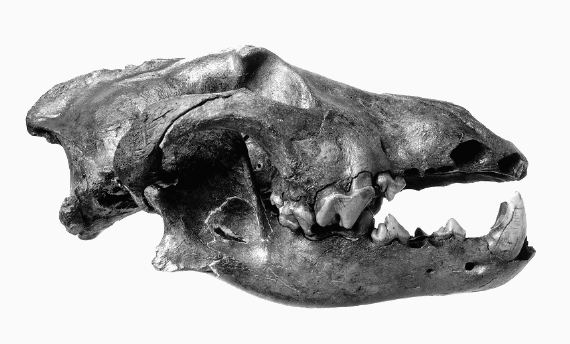




The skull depicted at the top of this page belonged
to one of the dominant predators of the
late Permian (about 260 million years ago), a gorgonopsid called
Lycaenops. At the bottom of this page is the skull of a
Pleistocene wolf. Both of them show the
feature seen in all synapsids: one opening in the dermal bones of the skull.
In most vertebrates, the powerful muscles that close the jaw attach to the
top of the skull and must pass through a space in the bones of the skull
to reach the jaw. Synapsids have one such space;
diapsids have two. You can feel how
your own chewing muscles pass through a space in your skull (the temporal
opening) by placing your hand against the side of your face and biting
down. The chewing muscles pass underneath a bony bridge (the zygomatic
arch), which is found in all mammals and in their extinct relatives in
the Synapsida.

















